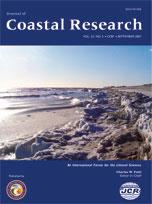The seasonal dynamics of phytoplankton chlorophyll and nutrients were studied between August 1997 and March 1999 along a cross-shelf section of the inner coastal of Paraná State, southern Brazil. Vertical thermohaline stratifications in the rainy summer alternated with winter homogeneities. Nitrate-N varied from 0.17 to 1.13 µM, nitrite-N from 0.04 to 1.10 µM, phosphate-P from 0.37 to 0.73 µM, and silicate-Si from 2.5 to 10.2 µM, all presenting maximum concentrations at the bottom layers at the outer stations. Chlorophyll concentrations varied from <0.02 to 10.8 µg·L−1 throughout the study period, with maxima at subsurface and bottom layers depending on the season. Seasonal differences in the distributional patterns of nutrients and chlorophyll were caused by two main wind-driven physical processes: (i) onshore intrusions of South Atlantic Central Waters and (ii) remote continental runoff from La Plata River. These were considered the main sources of new nutrients in summer and winter periods, respectively. Phytoplankton biomass (indicated by chlorophyll concentrations) tends to accumulate at subsurface layers, representing the primary source of organic matter for pelagic and benthic habitats in the inner shelf off Paraná State.
How to translate text using browser tools
1 September 2007
Sources of Nutrients and Seasonal Dynamics of Chlorophyll in the Inner Shelf off Paraná State—South Brazil Bight
Frederico Pereira Brandini,
Ariel Scheffer da Silva,
Eduardo Teixeira da Silva,
Hedda Kolm
ACCESS THE FULL ARTICLE

Journal of Coastal Research
Vol. 23 • No. 5
September 2007
Vol. 23 • No. 5
September 2007
Chlorophyll
hydrography
inner shelf dynamics
nutrients
South Brazil Bight




